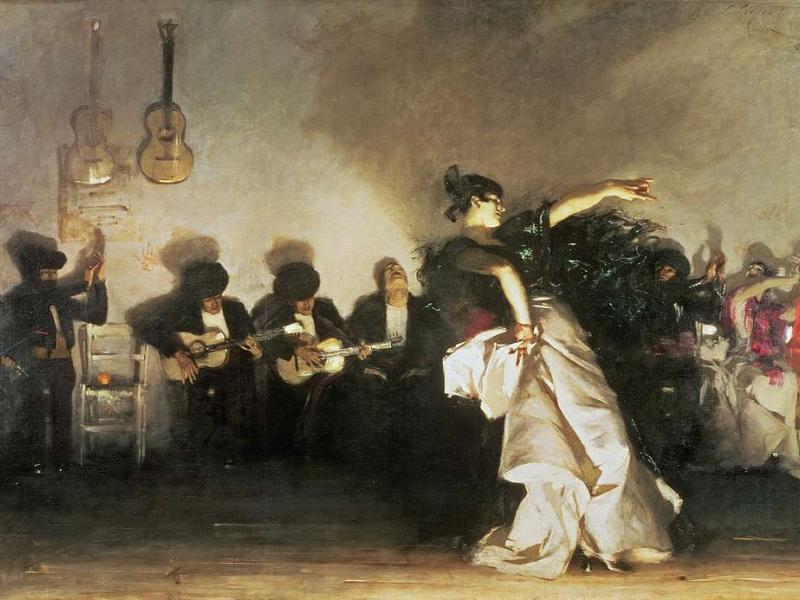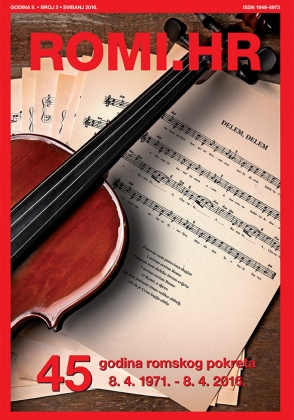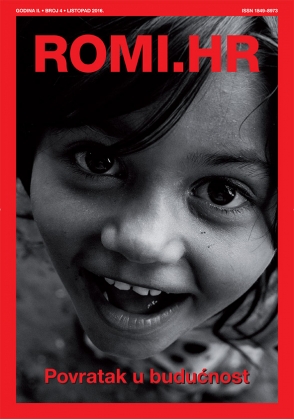Features ROMI.HR
/In the 19th century, Romani themes became popular in art, including painting, engraving, and sculpture. Many foreign artists came to Spain to capture Rom life. The Roma became the main focus of these artworks, seen as a people who represented authenticity, which was appealing to Romantic and costumbrismo artists. These artists often highlighted and exaggerated Roma folk traditions. During this time, both male and female Roma models were identified, and their images were used in prints for anthropological studies, especially to show examples of traditional clothing.
Édouard Manet was one of the first artists to paint scenes of modern life in the 19th century. His painting, “Gypsy with a Cigarette” (1862) was found in his studio after his death and never shown publicly, with no clear record of its original title. Purchased by Edgar Degas, it was initially called "Indian Woman" or "Mexican Woman" in early sales. Manet became interested in painting Roma figures in the 1860s. In this piece, the woman’s dark skin, messy hair, and confident pose set her apart from the norms of respectable French women of the time. She casually holds a cigarette, her gaze distant, creating a sense of contemplation. Manet appears to have left the canvas unfinished, making it difficult to determine how he would have completed it.
In the 1930s, scholars began calling it “Gypsy with a Cigarette”, reflecting the term Manet used in other works. However, in 2023, Princeton University Art Museum changed the title to “Woman with a Cigarette” to address concerns about the original title's derogatory nature and the unknown identity of the woman depicted.
“El Jaleo” is a large painting by John Singer Sargent, showing a Spanish Romani dancer performing with musicians. Painted in 1882, it hangs in the Isabella Stewart Gardner Museum in Boston. Inspired by Sargent's 1879 trip through Spain and North Africa, the painting captures dramatic light effects, exotic figures, and the lively spirit of Roma dance. The name “El Jaleo” refers both to the commotion of the scene and the specific jaleo de jerez dance. After a year of planning and studies, Sargent completed the piece quickly, with bold and confident brushstrokes.
Unlike traditional academic painting, Sargent used bold contrasts between dark blacks and the bright white of the dancer's skirt, which is illuminated by strong footlights, giving a sense of movement. The lighting casts long, eerie shadows on the back wall, adding drama. The dancer, leaning forward, appears to move across the canvas in typical flamenco style, wearing a large embroidered shawl. “El Jaleo” feels immersive, making viewers feel present at the event, with its vivid portrayal of rhythm, sound, and motion. This painting blends elements of both Impressionism and Realism.
Van Gogh, one of the significant painters was also fascinated by the romantic and exotic life of the gypsies in the area around Arles and the Camargue, which he felt mirrored his own isolation from the local community. His unusual behavior and appearance made him stand out in the conservative rural town, which eventually led to his departure. Van Gogh craved the company of other artists and felt lonely in Arles, staying connected to the art world through his brother Theo and friends like Paul Gauguin and Bernard. However, the lack of social contact deepened his sadness and depression.
"Encampment of Gypsies with Caravan" is a painting by Vincent van Gogh from 1888, showing a group of Roma and their colorful caravans in a natural setting. Van Gogh's lively brushwork and bright colors bring energy and life to the scene. The painting captures a fleeting moment of beauty, reflecting his interest in themes of travel and community. His use of light and shadow adds depth, enhancing the warmth and richness of the Roma way of life. The work is currently located in the Musée d'Orsay in Paris.
In these works, the Roma people are portrayed as symbols of freedom, resilience, and connection to nature, which fascinated many 19th-century artists. Through their depictions, these artists captured not only the visual beauty of Romani life but also celebrated their cultural richness and unique spirit, leaving a lasting impression on the art world.
 Back to Features
Back to Features













